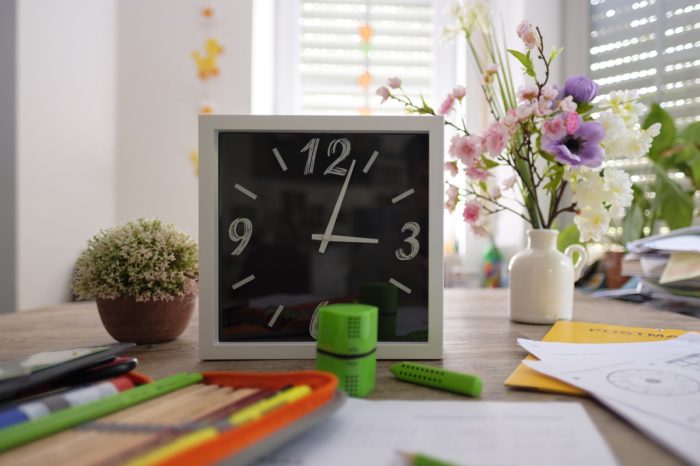This is an unprecedented time for everyone. Public and private schools around the country have closed for more than three weeks. Many schools are scrambling to set up online learning. As for Kyle’s Hays CISD, the district says that teachers and campuses will provide information about online and at-home instruction.
Meanwhile, some parents are looking into setting up a homeschooling space to complement their students’ education. It can help keep kids busy and their minds challenged. Even if you don’t homeschool, setting up a homeschool classroom can give students a place where they can concentrate on their studies, do some work to stay on top of their learnings, and engage their creativity. Here’s how you can get started.
DESIGNATE SPACE FOR LEARNING
Choose a room or an area that you designate as a space for studying and learning. That way whenever students enter that space, they know it’s time to focus on learning. When they leave the space for lunch or at the end of the day, they know they’re on a break from school.
What you put in the space depends on the children’s ages. Most ages can use a table with chairs. This gives them an easy-to-clean hard surface for coloring, writing, and doing sticky projects. Beware the table may eventually get markers and glue all over it. So, you don’t want to use a fancy table that needs to stay pristine.
The students need to be able to get in their chairs without much struggle. You’ll want the table to be low enough that they can rest their arms on it while writing and coloring.
SETTING UP THE HOMESCHOOL SPACE
You can never go wrong with a bookshelf as books are always central in a classroom. Perhaps, a combination of a bookshelf with storage bins would make good use of space. You can store school supplies in the bins and books on the shelves without the bins.
When it’s time to do art, you can pull out the bin with the art supplies and bring it to the table. After they finish, they can put all the supplies in the bin and put it back on the shelf. Each bin can cover a different subject. For instance, you might have calculators, rulers, protractors, and compasses in a math bin. Magnets, snap circuits, and other materials for science could fill the science bin.
For preschool and elementary school-aged kids, you could put up the letters of the alphabet as a border. Hang posters with multiplication tables, sight words, planets, and maps. Again, go for age-appropriate content. If you don’t have any of these posters or signs, order them online or print your own.
If you want to go the extra mile and create learning stations, do a search for “classroom learning stations” for ideas. You may want a separate station for math, science, art, writing, and creativity.
As for a computer, you can set one up in the homeschool classroom. Just make sure it has a password that only parents know. And turn on parental controls to manage what they can do on the Internet. It may help to have a timer. That way you can tell them to work on math for 10 minutes or until the timer goes off.
Whether you homeschool your kids or enhance their learning, you’ll have a space that communicates they’re in learning mode. It’ll be a good place to do school work whether their school moves to an online classroom or opens back up.
Want to look at new homes in Kyle? You can safely explore the homes virtually. Questions? Contact our Crosswinds team.
